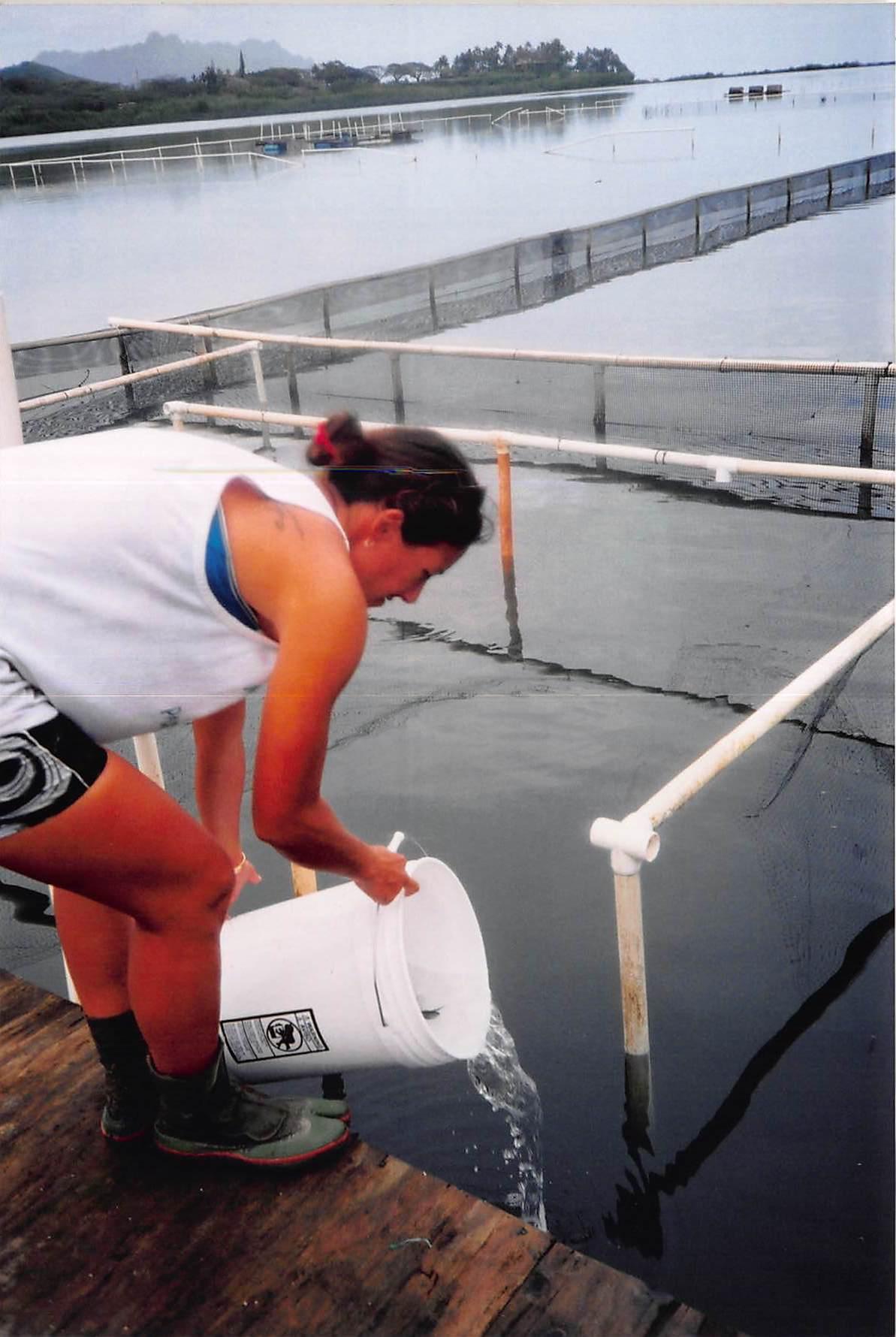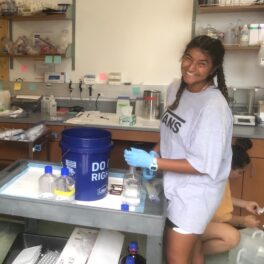Research reveals how climate change may affect Hawaiian aquaculture
 Paepae o Heʻeia executive director Hiʻilei Kawelo tending to moi (fish) at Heʻeia Fishpond. Image courtesy of Paepae o Heʻeia.
Paepae o Heʻeia executive director Hiʻilei Kawelo tending to moi (fish) at Heʻeia Fishpond. Image courtesy of Paepae o Heʻeia.For centuries, indigenous peoples of the Hawaiian Islands practiced sustainable aquaculture by building walled fishponds in coastal estuaries. Historical records estimate that in the early 1900s an extensive network of over 450 fishponds across the Hawaiian Islands produced upwards of 2 million pounds of fish annually and supported large thriving communities. Currently, worldwide aquaculture accounts for almost one-half of fish consumption.
Researchers with SOEST and Native Hawaiian fishpond stewards Paepae o Heʻeia formed a collaborative partnership to understand the role of climate change in subtropical coastal estuarine environments within the context of aquaculture practices in Heʻeia Fishpond. He’eia is a traditional Hawaiian fishpond on Oʻahu. Results published recently in PlosONE indicate that there is a relationship between two periods of high fish mortality at Heʻeia Fishpond and changes in the climate.
“Our results provide empirical evidence regarding El Niño effects on the coastal ocean, which can inform resource management efforts about the potential impact of climate variation on aquaculture production,” said Rosie Alegado, corresponding author of the study and assistant professor in the Department of Oceanography and University of Hawai‘i Sea Grant College Program (Hawai‘i Sea Grant).
Other authors from the Department of Oceanography include Daniel McCoy, Margaret A. McManus, Charles Young (also JIMAR), Brandon D’Andrea, and Kathleen C. Ruttenberg.
Read more about it in the UH Mānoa News and the Honolulu Star-Advertiser (subscription required); or listen to the story on Hawaii Public Radio.




